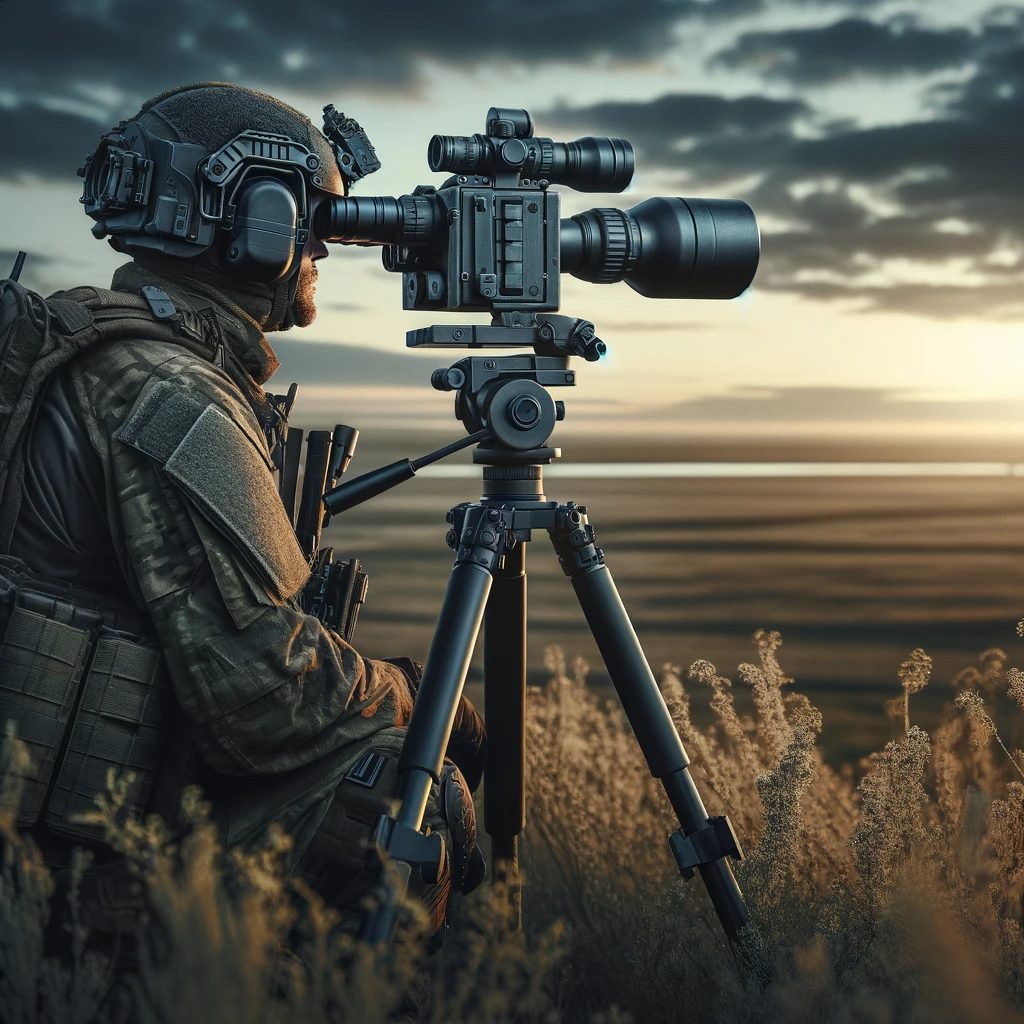Abstract
Special operators conducting reconnaissance need a way of generating accurate compass bearings to targets. Traditionally, special operators have used magnetic and electronic compasses, but these tools are too inaccurate for the modern battlefield. What special operators need are gyrocompasses–which are immune from magnetic interference–paired with optical zoom capabilities. Supplement this technology with AI software that can determine the make and model of enemy threats in the optic’s reticle, and we have a tool fit for the special reconnaissance missions of today.
Problem Statement
The tool special operators typically use to determine their line of bearing to a target is a pair of binoculars equipped with a digital magnetic compass. These compasses, being magnetic, are subject to magnetic interference from metal in the operator’s kit, weapon system, or environment. The error associated with magnetic interference increases as the distance to the target increases. And here’s an important fact: special operators now need to be able to recon targets at distances greater than ever. That’s because the United States has pivoted away from the terrorism threat and toward the threat posed by nation-states with comparable military might. The reconnaissance targets of today are more lethal and protected, requiring special operators to maintain further standoff as they conduct their work. Therefore, special operators need a new tool for today’s reconnaissance missions. This tool must be able to generate accurate lines of bearings for targets many miles away.
Proposal
To address this challenge, we need to look to where we already have such tools. Military aircraft use gyroscopic compasses and integrate these readings with input from other sensors to generate bearings that are accurate and reliable enough for targeting purposes. Military aviators have already built an ideal reconnaissance tool; what special operators need to do is harness this technology and modify it for ground operations. The end result would be, at a minimum, a gyrocompass combined with optical zoom, night vision, and thermal vision capabilities–all mounted on a tripod. Ideally, this tool would have AI software that allows it to recognize the model of warship or surface-to-air threat in the optic’s reticle.
Challenges and Unknowns
If we could procure a gyrocompass from the avionics suite of a non-operational military aircraft, we could take it apart and use it to guide our research and development. Procuring such a gyrocompass would no doubt be challenging. Additional challenges lie in reducing our end product to a man-portable size and weight.

 OUSD Research and Engineering
OUSD Research and Engineering  West Point
West Point